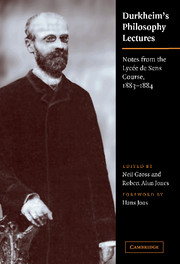Book contents
- Frontmatter
- Contents
- Foreword
- Translators' Note
- Acknowledgments
- Introduction
- Part I Preliminary Matters
- Part II Psychology
- Part III Logic
- 38 Introduction. On Logic
- 39 On Truth. On Certainty
- 40 On Certainty (Conclusion)
- 41 On False Certainty or Error
- 42 Skepticism
- 43 Ideas. Terms. Judgments. Propositions
- 44 Definition
- 45 On the Syllogism
- 46 On Induction
- 47 Fallacies
- 48 On Method
- 49 Method in the Mathematical Sciences
- 50 The Methodology of the Physical Sciences
- 51 Method in the Natural Sciences
- 52 Method in the Moral Sciences
- 53 Method in the Historical Sciences
- 54 Language
- Part IV Ethics
- Part V Metaphysics
- Appendix: Biographical Glossary
- Index
53 - Method in the Historical Sciences
Published online by Cambridge University Press: 21 October 2009
- Frontmatter
- Contents
- Foreword
- Translators' Note
- Acknowledgments
- Introduction
- Part I Preliminary Matters
- Part II Psychology
- Part III Logic
- 38 Introduction. On Logic
- 39 On Truth. On Certainty
- 40 On Certainty (Conclusion)
- 41 On False Certainty or Error
- 42 Skepticism
- 43 Ideas. Terms. Judgments. Propositions
- 44 Definition
- 45 On the Syllogism
- 46 On Induction
- 47 Fallacies
- 48 On Method
- 49 Method in the Mathematical Sciences
- 50 The Methodology of the Physical Sciences
- 51 Method in the Natural Sciences
- 52 Method in the Moral Sciences
- 53 Method in the Historical Sciences
- 54 Language
- Part IV Ethics
- Part V Metaphysics
- Appendix: Biographical Glossary
- Index
Summary
The goal of history is to recount the past and return it to life. Where philosophy and the positive sciences study laws in the abstract, the aim of history is to show how laws play out in particular times and places. The other sciences try to draw out the resemblances between things, but history is more concerned with highlighting their differences. History shows how little two periods of time might resemble one another. Why does history focus on the particular? History's goal, as we've said, is to bring the past back to life, and what is general and abstract is dead. Life lies in the particular. Having analyzed the difference between two periods, however, history must then explain how one developed out of the other.
The material of history is furnished by three sources – each of them a form of testimony. These are legends, monuments, and documents.
Legends. Legends are stories that are passed down orally – typically within a single family. Yet stories might still be considered legends if they're written down, for while written stories aren't recounted by eyewitnesses, they remain legends. Their only proof lies in the oral tales on which they're based.
[…]
- Type
- Chapter
- Information
- Durkheim's Philosophy LecturesNotes from the Lycée de Sens Course, 1883–1884, pp. 218 - 220Publisher: Cambridge University PressPrint publication year: 2004



